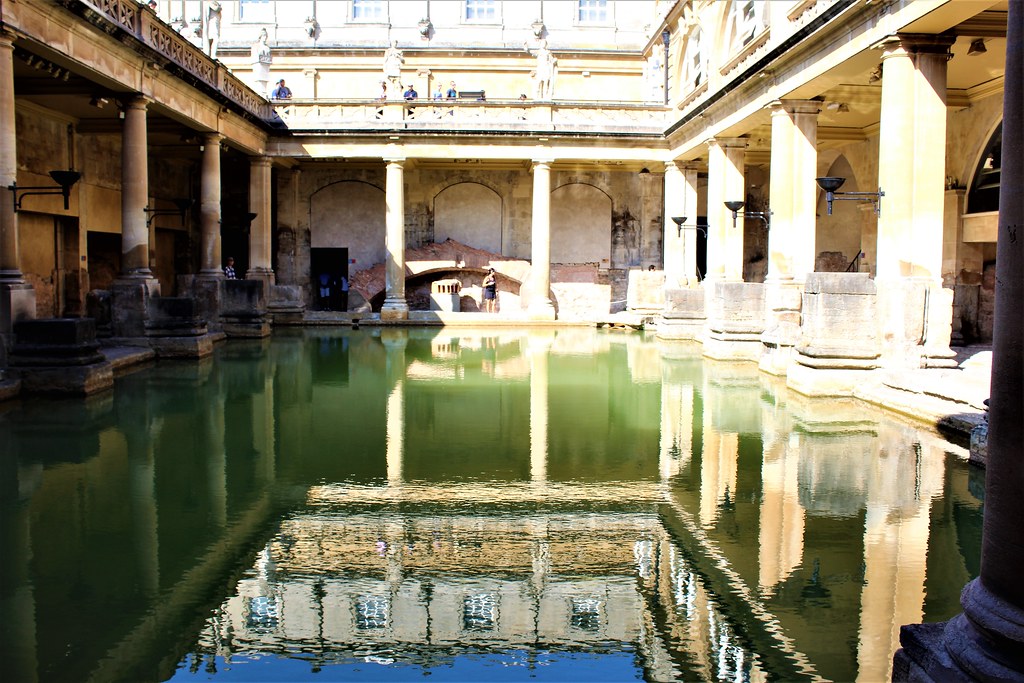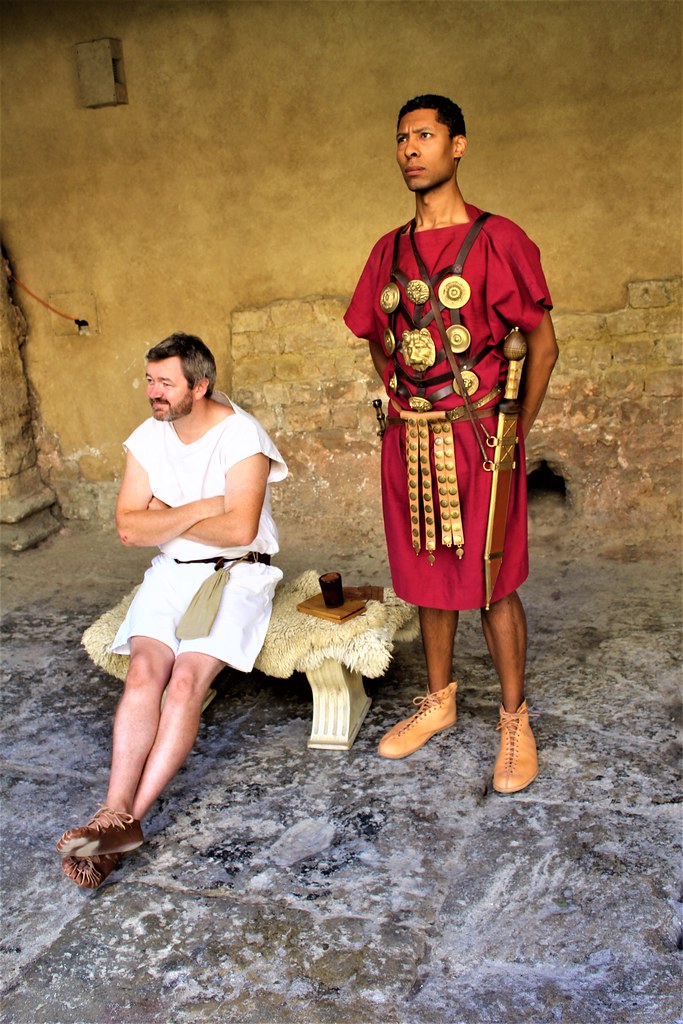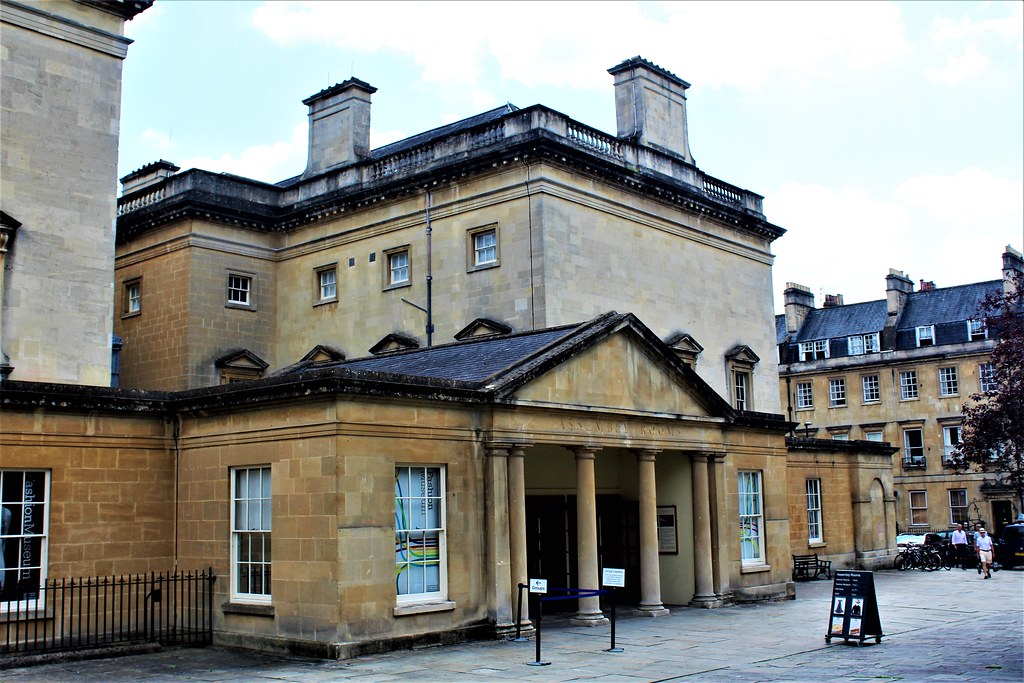Sample tour of Bath, one of England's top tourist destinations
Today, I am focusing on threeof the key sites in Bath, namely the famous Roman
Baths, the Fashion Museum and the Pump Room. This includes mid-afternoon refreshment at the latter,in the elegant and refined surrounding with
live, classical music renditions in the background.
Information on Bath
Bath has a population of about 84,000, is located some 115 miles ( 184 km) West of London in the county of Somerset.
Roman Era: The Romans invaded Britain in AD 43 and within twenty years had found and built a Roman Baths complex and adjoining temple around the country’s only natural hot springs which they named Aqua Sulis. Here, the Romans encouraged worship of their goddess, Minerva. The complex appears to have fallen into progressive decline from around the late 3rd century onwards, in tandem with decline of Roman power in the West. The bathing complex was rediscovered in the 18th century, has been restored and is now a major visitor attraction. Today, visitors can connect with the Roman bathing experience at the Thermae Bath Spa facility.
Georgian Era: Richard ‘Beau’ Nash ( 1674-1762) was the catalyst for the development of Bath as a fashionable resort in the 18th century. Some 5000 listed (heritage) buildings date from this period when father and son architect duo of John Wood the Elder (1704-1754) and John Wood the Younger (1728-1782) were active in the construction of such notable architectural features as the Circus, Queen Square, Assembly Rooms and Royal Crescent.
Information on the Roman Baths
The Romans occupied most of mainland U.K. from around AD 43 to AD 410 from which period we have a massive physical legacy of roads, ruins, settlements, inscriptions, coins, amphitheatres and cities plus military sites such as Hadrian’s Wall and the Antonine Wall.
Modern-day Bath was known as Aqua Sulis, a recreation themed settlement centred on the hot springs which emerge from deep within the earth. More information as follows:
Information on Bath Assembly Rooms
The Bath Assembly rooms are located on Bennett Street. They were designed by John Wood the Younger in 1769. Their purpose was to be a place for dancing and music. When completed in 1771 the Rooms were described as ‘the most noble and elegant of any in the kingdom’. Today, this building is home to the Fashion Museum, one of the world’s great museum collections of historical and contemporary dress.
Information on Bath Pump Room
The practice of drinking the thermal waters of Bath only began in the later seventeenth century. A pump was installed to allow patients to have access to the water directly from the spring. In the first years of the eighteenth century a building was erected where the drinkers could be sheltered. This became the first Pump Room and was completed in 1706. Due to rising demand and new Pump Room was built in 1795 and this connected with the two smaller springs known as the Hot Bath and the Cross Bath.
Information on Bath
Bath has a population of about 84,000, is located some 115 miles ( 184 km) West of London in the county of Somerset.
Roman Era: The Romans invaded Britain in AD 43 and within twenty years had found and built a Roman Baths complex and adjoining temple around the country’s only natural hot springs which they named Aqua Sulis. Here, the Romans encouraged worship of their goddess, Minerva. The complex appears to have fallen into progressive decline from around the late 3rd century onwards, in tandem with decline of Roman power in the West. The bathing complex was rediscovered in the 18th century, has been restored and is now a major visitor attraction. Today, visitors can connect with the Roman bathing experience at the Thermae Bath Spa facility.
Georgian Era: Richard ‘Beau’ Nash ( 1674-1762) was the catalyst for the development of Bath as a fashionable resort in the 18th century. Some 5000 listed (heritage) buildings date from this period when father and son architect duo of John Wood the Elder (1704-1754) and John Wood the Younger (1728-1782) were active in the construction of such notable architectural features as the Circus, Queen Square, Assembly Rooms and Royal Crescent.
Information on the Roman Baths
The Romans occupied most of mainland U.K. from around AD 43 to AD 410 from which period we have a massive physical legacy of roads, ruins, settlements, inscriptions, coins, amphitheatres and cities plus military sites such as Hadrian’s Wall and the Antonine Wall.
Modern-day Bath was known as Aqua Sulis, a recreation themed settlement centred on the hot springs which emerge from deep within the earth. More information as follows:
- The water flows at a rate of 250,000 gallons per day at temperature of 46 degrees centigrade (115 F.) and contains 43 minerals.
- The construction demonstrates advanced hydraulic engineering skills of the Romans in the art of taming natural springs.
- Building of the Baths and temple was completed by around AD 75. In subsequent periods the original simple but elegant structure was modified and extended to include a laconium (circular room with dry, hot air), a cold plunge Circular Bath and new suite of baths at the east end.
- A religious site dedicated jointly to the local deity Sul (from which Aqua Sulis is derived) and the Roman goddess Minerva.This was a destination for pilgrims seeking guidance of Sulis Minerva and healing in curative waters.The facility was open to a wide range of the populace, from age 18 months to 86 years, both military and civilian.
- At the centre of Aqua Sulis was a classical temple dedicated to the deities mentioned above.
- The temple was designed so the hot springs arose from the ground within the temple courtyard with the water channelled into an elaborate bathing facility.
- Military tombstones have been found in the locality but the site may have been used by the Roman Army for convalescent and recuperative purposes.
Information on Bath Assembly Rooms
The Bath Assembly rooms are located on Bennett Street. They were designed by John Wood the Younger in 1769. Their purpose was to be a place for dancing and music. When completed in 1771 the Rooms were described as ‘the most noble and elegant of any in the kingdom’. Today, this building is home to the Fashion Museum, one of the world’s great museum collections of historical and contemporary dress.
Information on Bath Pump Room
The practice of drinking the thermal waters of Bath only began in the later seventeenth century. A pump was installed to allow patients to have access to the water directly from the spring. In the first years of the eighteenth century a building was erected where the drinkers could be sheltered. This became the first Pump Room and was completed in 1706. Due to rising demand and new Pump Room was built in 1795 and this connected with the two smaller springs known as the Hot Bath and the Cross Bath.










Comments
Post a Comment